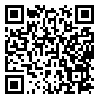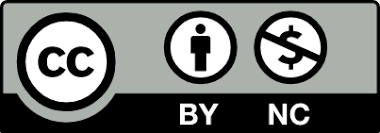شمارۀ جدید فصلنامه (تابستان 1404) منتشر شد
Volume 14, Issue 1 (10-2023)
Social Problems of Iran 2023, 14(1): 61-88 |
Back to browse issues page
Download citation:
BibTeX | RIS | EndNote | Medlars | ProCite | Reference Manager | RefWorks
Send citation to:



BibTeX | RIS | EndNote | Medlars | ProCite | Reference Manager | RefWorks
Send citation to:
Beheshti S S, Dehghani H, Sedaghat H, Fattahpour E. (2023). Financial corruption; interaction of agents and defective structure. Social Problems of Iran. 14(1), 61-88. doi:10.61186/jspi.14.1.61
URL: http://jspi.khu.ac.ir/article-1-3624-en.html
URL: http://jspi.khu.ac.ir/article-1-3624-en.html
1- , Sbeheshty@yu.ac.ir
Abstract: (1821 Views)
One of the most important challenges facing governments is corruption, which includes embezzlement, fraud, rent-seeking, misuse and betrayal of the treasury. The present study, by interviewing with the eight people accused of economic corruption, seeks to investigate the most important implications that have led to economic corruption. Samples were selected with purposeful method sampling and interviewed in depth. Following the analysis of the data, the conditions and contexts leading to corruption have been extracted with the three general themes of "corrupt personalities", "unsuccessful discriminatory organizations" and "dysfunctional structures of corruption". "Negative mindset", "mindfulness", "reduction of work ethic and conscience" and "dangerous elites" have been identified as the characteristics of corrupting personalities. "Internal discrimination", "partisanship", "illegality of managers", "weak organizational structure", "incompetence", poor support and living conditions of employees "," working conditions "and" trapping "have been extracted as various dimensions of failing organizations. "Incompetent managers", "weak enforcement", "weak monitoring systems", "corrupt network relations", "bus management" and "kinship" have also been identified as dimensions of a dysfunctional corruption structure. Corruption is intertwined as a network, meaning that none of the organizational and structural levels and personality traits of perpetrators, their will and motivation alone can cause corruption, but these levels can A network structure and an aggravating or aggravating relationship become the bedrock of committing corruption.
Type of Article: Original Research |
Subject:
Security
Received: 2023/07/9 | Accepted: 2023/09/28 | Published: 2023/10/9
Received: 2023/07/9 | Accepted: 2023/09/28 | Published: 2023/10/9
References
1. Attride, A.J. (2001). Thematic Networks: An Analytic Tool for Qualitative Research. Qualitative Research,1(3), 385405.DOI:10.1177/146879410100100307 [DOI:10.1177/146879410100100307]
2. DeVaal, A,. & Ebben, W. (2011). Institutions and the Relation between Corruption and Economic Growth. Review of Development Economics, 15: 108-123. [DOI:10.1111/j.1467-9361.2010.00596.x]
3. Dong, B., & Benno, T. (2013). Causes of corruption: Evidence from China. China Economic Review, 26(C), 152-169. DOI: 10.1016/j.chieco.2012.09.005 [DOI:10.1016/j.chieco.2012.09.005]
4. Given, L. M. (2008) the sage encyclopedia of qualitative. Vol. 1-2, California: Sage. DOI:10.4135/9781412963909 [DOI:10.4135/9781412963909]
5. Graf, L. J. (2007). Consequences and Causes of Corruption What do We Know rom a Cross-Section of Countries. University of Passau, Passau.
6. Griger, J. (2005). Corruption in Organizations: sime Outlines for Research Working Paper No. 203, Department of Economics and Social Sciences University of Wuppertal.
7. Heidenheimer, A., & Johnston, M. (2001). Political Corruption: Concepts and Contexts.Somerset, NJ: Transaction Publishers.
8. Heineman, B. W., & Heimann, F. (2006).The Long War against Corruption. Foreign [DOI:10.2307/20031968]
9. Affairs, 85(3), 75-86. doi: 10.2307/20031968 [DOI:10.2307/20031968]
10. Holmes, L. (2015). Corruption - A very short introduction. Oxford: Oxford University Press. [DOI:10.1093/actrade/9780199689699.001.0001]
11. Larmour, P., & Wolanin, N. )2013(. Corruption and Anti-Corruption , ANU E Press. [DOI:10.22459/CAC.03.2013]
12. Lee, W.S. (2013). Engaging in corruption: The influence of cultural values andcontagion effects at the micro level. Journal of Economic Psychology, 39. 287300. [DOI:10.1016/j.joep.2013.09.006]
13. Liiv, M.L. (2004). Causes of Administrative Corruption: Hypotheses for Central and Eastern Europe, Unpublished Master dissertation (MPA).
14. Lučić, D., Radišić, M., & Dobromirov, D. (2016). Causality between Corruption and the Level of GDP. Economic Research, 29: 360-379. [DOI:10.1080/1331677X.2016.1169701]
16. Malmström, C. (2014). Press conference by Cecilia Malmström, on the first EU AntiCorruption Report.
17. Merton, R. (1968). On Theorical Sociology, N.Y: The Free Press.
18. Moore, C. (2008). Moral disengagement in processes of organizational corruption. Journal of Business Ethics, 80(1), 129-139. DOI:10.1007/s10551-007-9447-8 [DOI:10.1007/s10551-007-9447-8]
19. Nordin, R,. Takim, R,. & Abdul Hadi, N. (2013). Behavioral factors of corruption in the construction industry. Procedia-Social and Behavioral Sciences, 64-74. [DOI:10.1016/j.sbspro.2013.11.008]
20. Olken, B. (2007). Monitoring Corruption: Evidence from a Field Experiment in Indonesia. Journal of Political Economy, 115(2). DOI:10.1086/517935 [DOI:10.1086/517935]
21. Quraishi,B.O. (2011). Assessing the Relevancy and Efficacy of the United Nations Convention against Corruption: A Comparative Analysis. Notre Dame Journal ofInternational & Comparative Law, 2(1), 101-120. https://scholarship.law.nd.edu/ndjicl/vol2/iss1/3/
22. Stiernstedt, P. (2019). The sum of all corruption: a grounded theory of corruption perception, PHD THESIS at the university of portsmoth.
23. Svensson, J. (2005). Eight Questions about Corruption. Journal ofEconomic Perspectives, 19(3), 19-42. [DOI:10.1257/089533005774357860]
24. Szarek,M, P. (2010). The European :union:'s Fight Against Corruption: The Evolving Policy Towards Member States and Candidate Countries: Cambridge University Press.
Send email to the article author
| Rights and permissions | |
 |
This work is licensed under a Creative Commons Attribution-NonCommercial 4.0 International License. |








